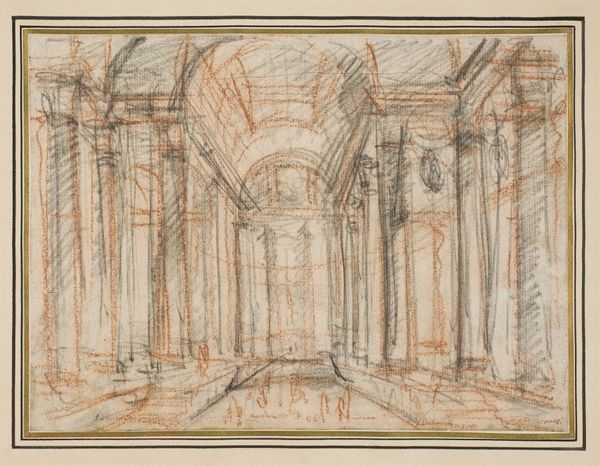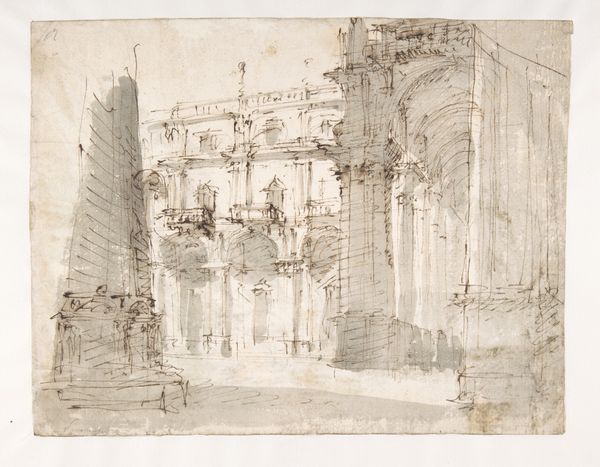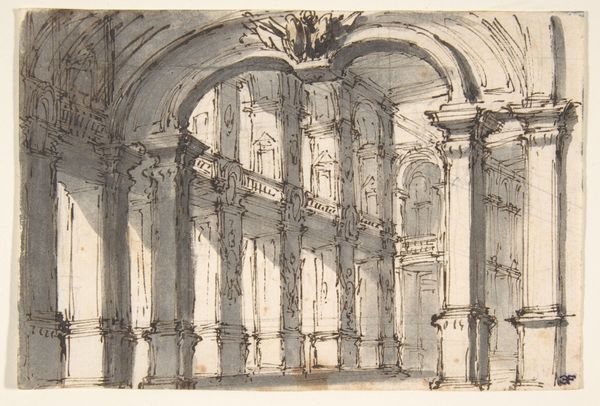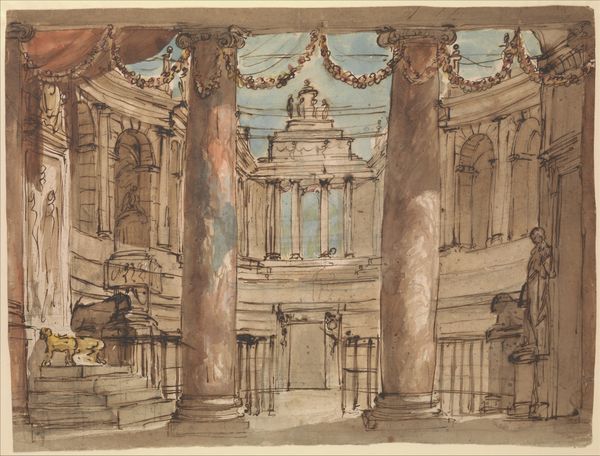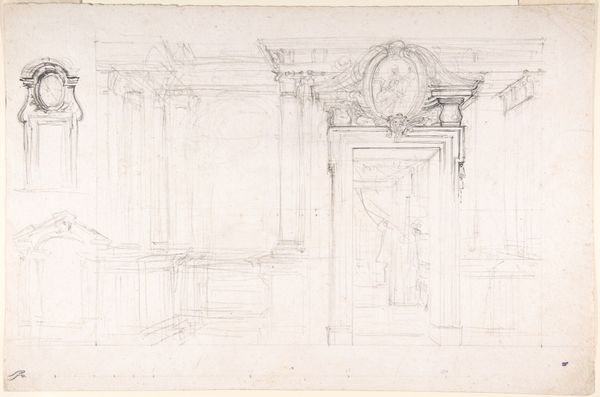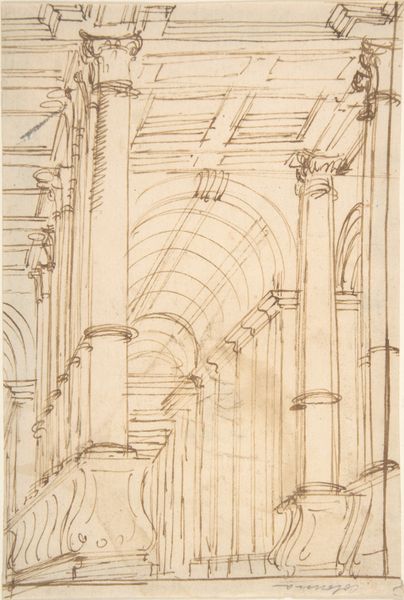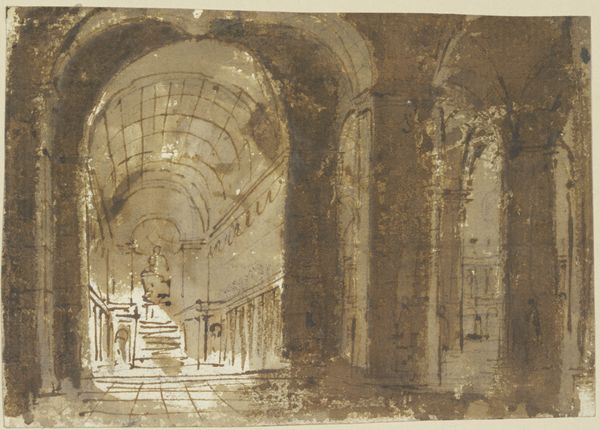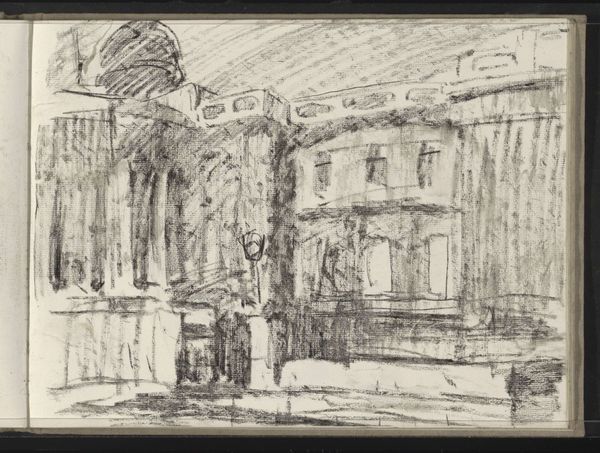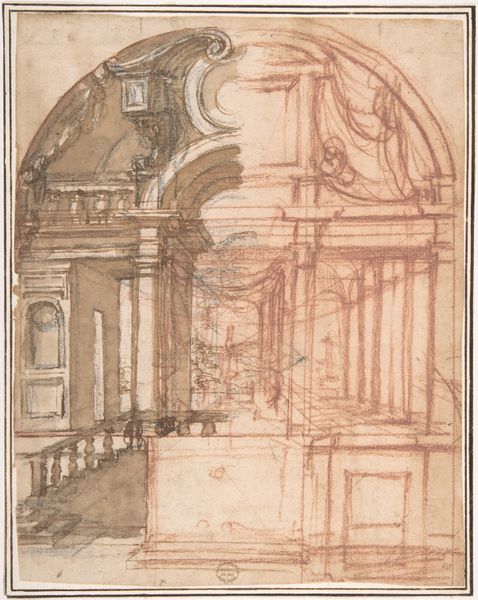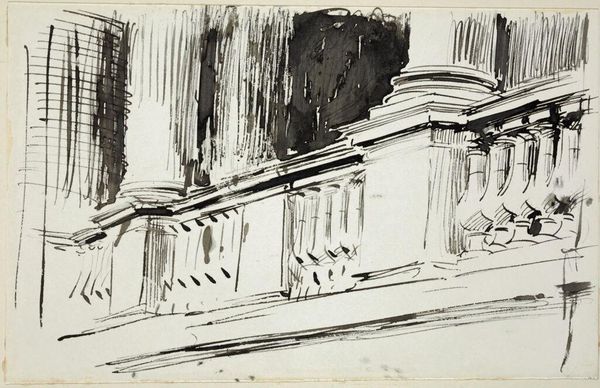
drawing, etching
#
drawing
#
neoclacissism
#
etching
#
greek-and-roman-art
#
etching
#
perspective
#
form
#
line
#
cityscape
#
history-painting
#
academic-art
#
watercolor
Dimensions: Overall: 21 x 30 cm (8 1/4 x 11 13/16 in.) left section: 21.1 x 8.4 cm (8 5/16 x 3 5/16 in.) center section: 21 x 18.6 cm (8 1/4 x 7 5/16 in.) right section: 21 x 7.4 cm (8 1/4 x 2 15/16 in.)
Copyright: National Gallery of Art: CC0 1.0
Editor: Here we have Giovanni Battista Piranesi’s “The Portico of the Pantheon,” created sometime in the early 1750s or 60s. It's an etching with a sort of brown wash that gives it a sepia tone. There’s something monumental and imposing, yet also decayed, about the architecture he's captured here. How do you interpret this work? Curator: I see a complex layering of power, history, and representation. Piranesi wasn't simply documenting the Pantheon; he was actively constructing a vision of Roman grandeur infused with his own anxieties about its decline. Consider how the architectural rendering almost overwhelms the few figures within the portico, diminishing their presence. How might this contrast between the vastness of the architecture and the smallness of the people reflect on 18th-century anxieties around empire, power, and the individual's place within grand historical narratives? Editor: That's a really interesting point. The architecture does feel almost…oppressive? It almost feels like the people are insignificant against the backdrop. Curator: Precisely. Think about the social and political context. Piranesi created these works during a time of burgeoning nationalism and intense debates about the legacies of empire. The Pantheon, a symbol of Roman power, is presented here as both awe-inspiring and perhaps, a little unsettling. Is it celebrating a glorious past, or lamenting a present decline? Editor: I guess it’s doing both, isn’t it? By highlighting both the magnificence and near-collapse of the site, it underscores a more complete picture. Curator: Absolutely, and how does Piranesi use perspective and scale to reinforce this tension? The exaggerated perspective emphasizes the grandeur but also makes the space feel disorienting, even theatrical. It encourages us to question the supposed objectivity of architectural representation. It shows how these things carry the weight of human ideology and affect societal structures. Editor: That's made me look at it in a totally new light! Curator: Indeed. Piranesi’s Portico encourages us to view historical sites as not static relics but sites of continuous cultural negotiation. A commentary on power, memory, and the ever-shifting relationship between past and present.
Comments
No comments
Be the first to comment and join the conversation on the ultimate creative platform.
